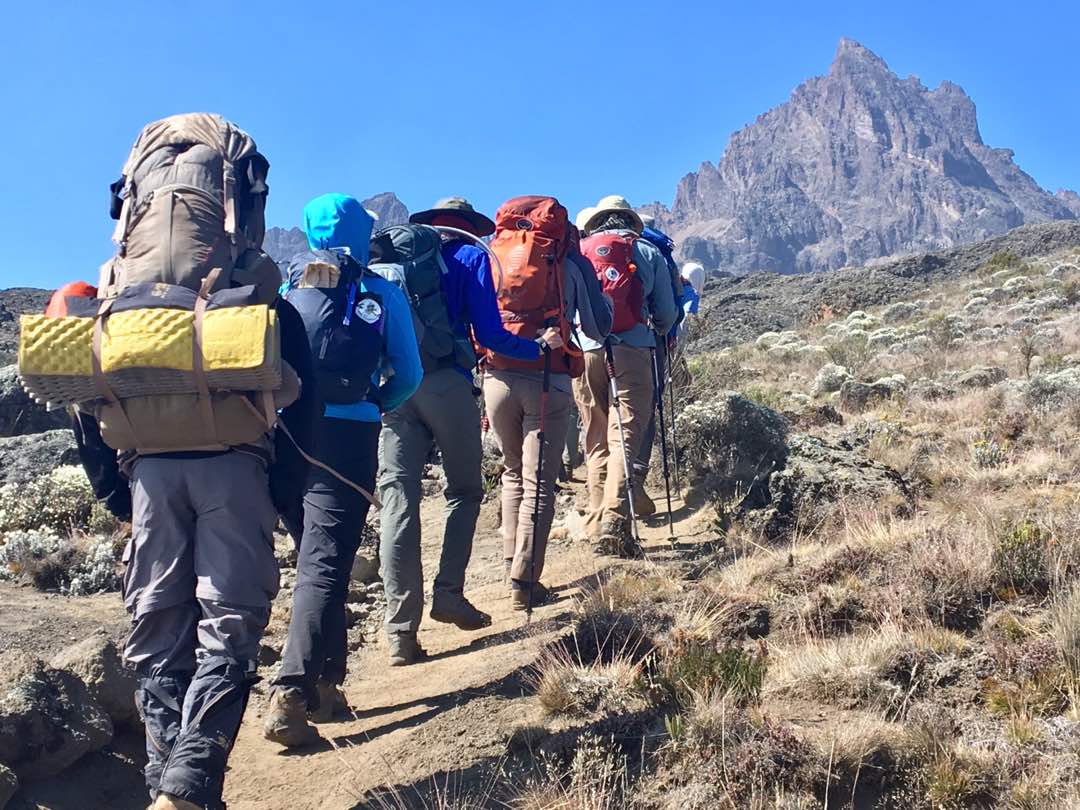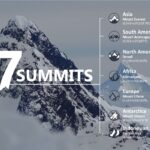ESSENTIAL EQUIPMENTS
- *Daypack: 30-40L is sufficient.
- *Waterproof duffle bag: 80-90L duffle bag to carry your main gear
- *Sleeping bag: -20 Deg C sleeping bag and compression sack.
- *Sleeping Bag Liner, for added warmth (optional)
- *Sleeping Pad, self-inflating or closed-cell foam
- *Water bladder Capacity to carry; 3 liters of water. / Bottles: 2 x 1.5 liters wide mouth Nalgene.
- *Trekking poles: An adjustable one is recommended.
- *Head lamp, with extra batteries
- *Poncho, during the rainy season (optional)
- *Pee Bottle, to avoid leaving the tent at night (optional)
- *Pee Funnels for ladies(optional)
- *Stuff Sacks or Plastic Bags, of various sizes, to keep gear dry and separate
HEADEAR:
- 1 x Wide brimmed hat or Baseball cap
- 1 x Warm hat/Thermal
- 1 x Neck gaiter/ Buff/Scarf
- 1 x Bandana
- 1 x Sunglasses UV protector
- 1 x Bandana
Handwear
- 1 x Gloves, warm (waterproof recommended)
- 1 x Glove Liners, thin, synthetic, worn under gloves for added warmth (optional)
- 1 x Mitten
UPPER BODY
- 1 x Short Sleeve Shirt, light-weight, moisture-wicking fabric
- 2 x Long Sleeve Shirt, light-weight, moisture-wicking fabric
- 2 x Thermal long underwear
- 1 x Soft Jacket, fleece or soft-shell
- 1 x Insulated Jacket, synthetic or down
- 1 x Down jacket 550-750 fill
- 1 x Waterproof Gore-Tex Jacket, breathable with hood
LOWER BODY
- 1 x Long Underwear (moisture-wicking fabric recommended)
- 2 x Thermal or fleece base layer for your legs. Merino wool is preferable.
- 1 x Fleece Pants
- 2 x Light or medium-weight trekking trousers. Convertible trousers are an option.
- 1 x Waterproof/windproof hard shell trousers Gore-Tex.
- 1 x Shorts (optional)
FOOTWEAR
- 1 x Hiking boots Waterproof with ankle support
- 1 x Running shoes or sandals to wear around camp after a day’s trek/Crocs
- 4 x pairs of socks, wool or synthetic
- 4 x pairs of liner socks, tight, thin, synthetic, worn under socks to prevent blisters
- 1 x pair Gaiters Mid-calf or knee height recommended
- 1 x pair Yak Trax Provides additional traction for snow/ice
OTHER ITEMS
- Plug Adapter: A plug adapter for charging your devices in the hotels before and after the trek. The standard voltage and frequency in Tanzania are 230 V and 50 Hz respectively. The power sockets that are used are of type D / G.
- Sun and lip screen: High SPF sunscreen and lip 30 – 50 protection balm
- Toiletries: toothbrush & toothpaste, hairbrush/comb, foot powder, hand cream, deodorant, soap.
- Toilet paper (1-2 rolls. Take out the cardboard center for easier packing)
- Ear plugs: For light sleepers. Snoring travels in quiet high-altitude camps!
- Personal snacks: Boiled sweets, nuts, energy bars and dried fruit are all a good shout. Isotonic drink powder to mix in with your water improves flavor and helps replace electrolytes
- Wet wipes and hand sanitizer: Staying clean on Kilimanjaro are a challenge. Wet wipes and hand sanitizer.
- Towel, lightweight, quick-dry
- Pencil and Notebook, miniature, for trip log (optional)
- Fingernail brush, Nail clippers
- Pocket knife (Swiss Army Knife or “Leatherman”)
- Spare contact lenses/glasses
- Camera/phone
Documents
- Passport (with additional 6 months’ validity after proposed trip return date) Tanzanian Entry Visa
- Air Travel Documents, Cash, Credit Cards (recommended for eventualities only & obtaining extra cash from ATMs)
- Travel Insurance Documents
- Vaccination Certificates (where applicable)
- Yellow fever certificate
Personal first-aid Kit
- Blister plasters – different shapes and sizes
- Antibiotic cream or ointment
- Band-Aid/Elastoplast for minor cuts and scrapes
- Ibuprofen/Paracetamol – over the counter pain relief
- Skin healing ointment such as Aquaphor
- Imodium for diarrhea
- Anti-nausea medication
- Acetaminophen, or Aspirin
- Throat lozenges
- Bandages and tape
- Antihistamines
- Melatonin (1-3mg) or other sleep aid
- Malaria pills (consult your doctor)
- Antibiotics (consult your doctor)
- Prescription drugs (consult your doctor)
- Diamox (consult your doctor)
- Nausea – Valois
- Muscular sprains
- Flu and colds
- Eye drops
Important note on packing list
- Normally porters carry your main duffel bag. The weight of this pack on Kilimanjaro is strictly limited to 18 kg (39 pounds). Overweight or extra luggage will require an extra porter
- Wrap clothing in rugged, waterproof stuff sacks.
- Basically, this is what you pack on your day pack: Rain gears; a warm upper-body layer; warm hat; 3-4 liters of water; trail-snacks; personal medical kit; sun block cream; passport and valuable things; waterproof cover for day pack; camera; headlamp; sunglasses. Add any other items you might need during the day because you won’t have access to your main luggage until the end of your trek for the day.
- Bring extra sets of batteries as cold weather shortens their life.
- Carry critical climbing gear on the plane with you (especially your boots) in case baggage is delayed.
- You may want to bring, Any warm clothing Shoes, T-shirts, Hats, Nerf football, frisbees, Candy, Pens, etc. as gifts for your guides and porters.







